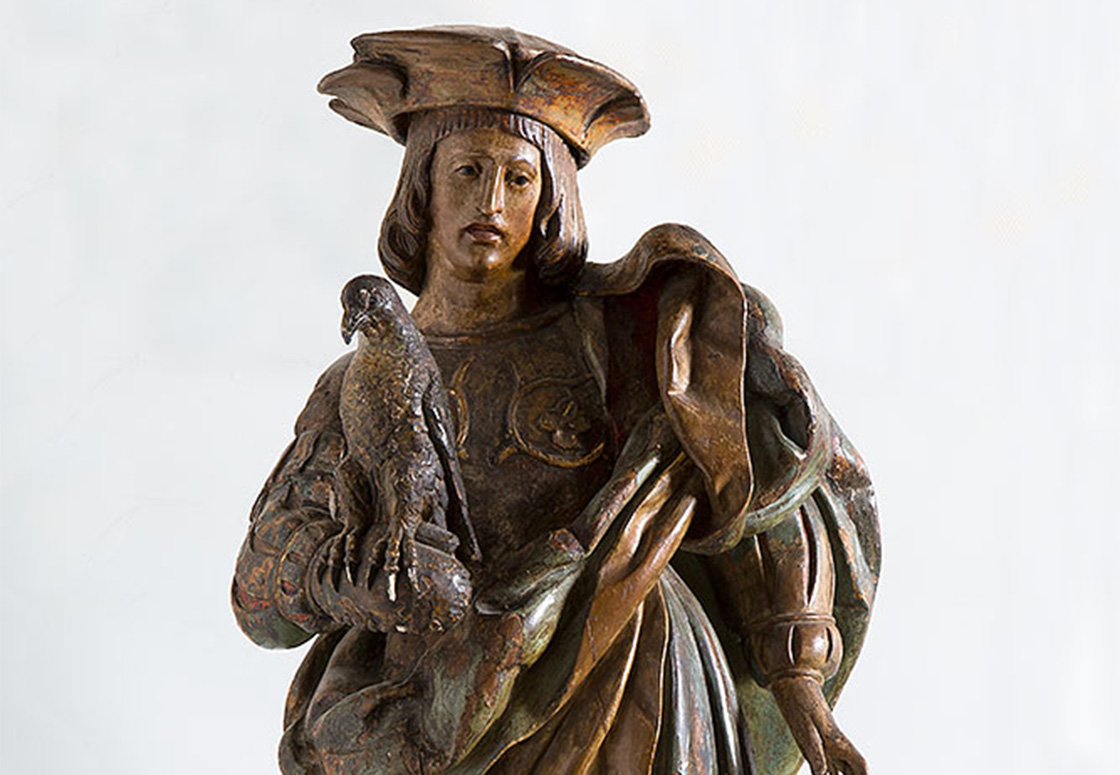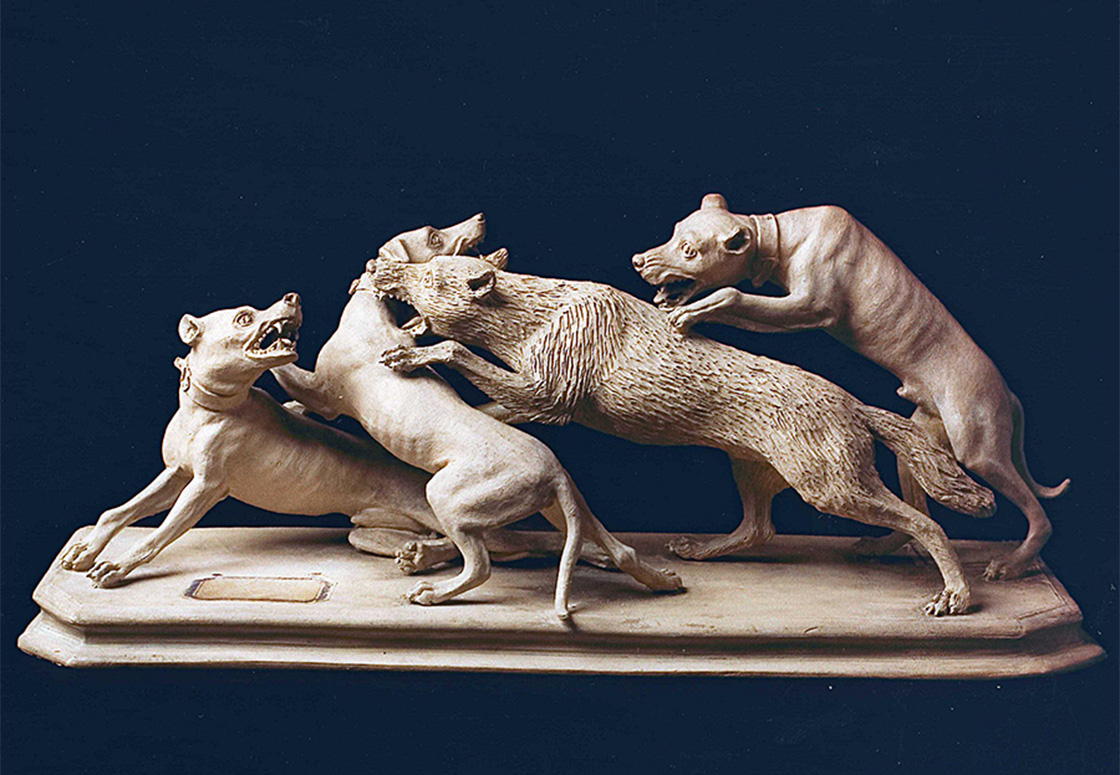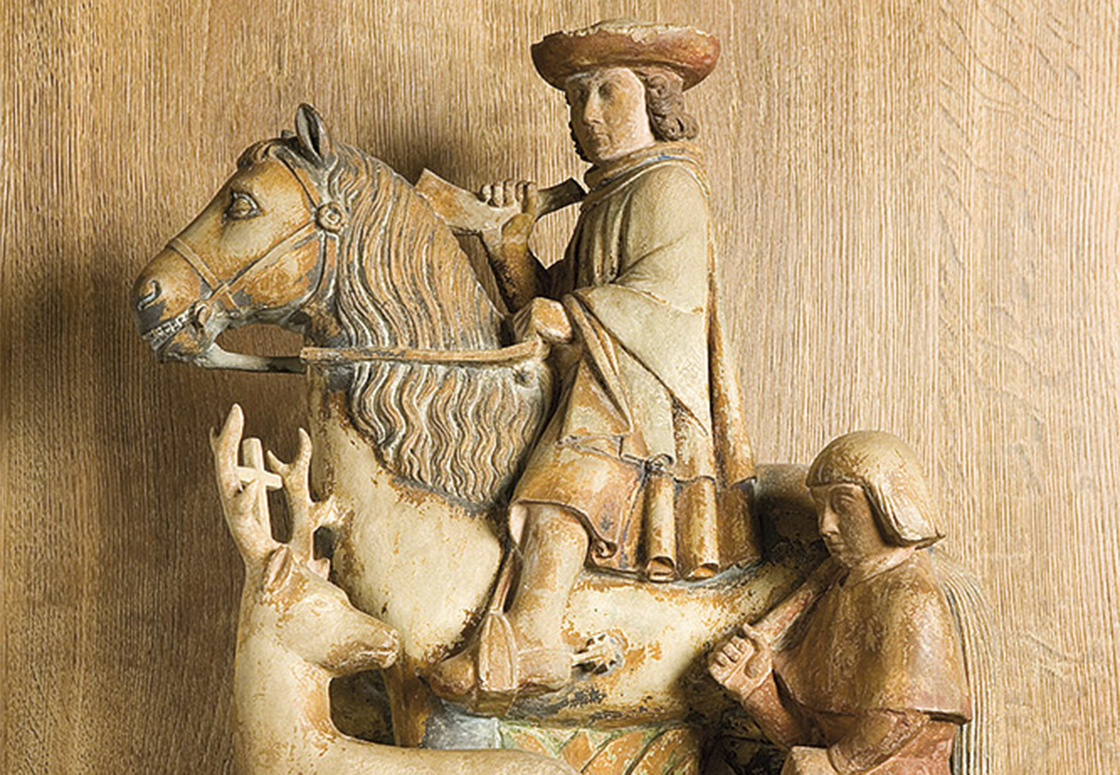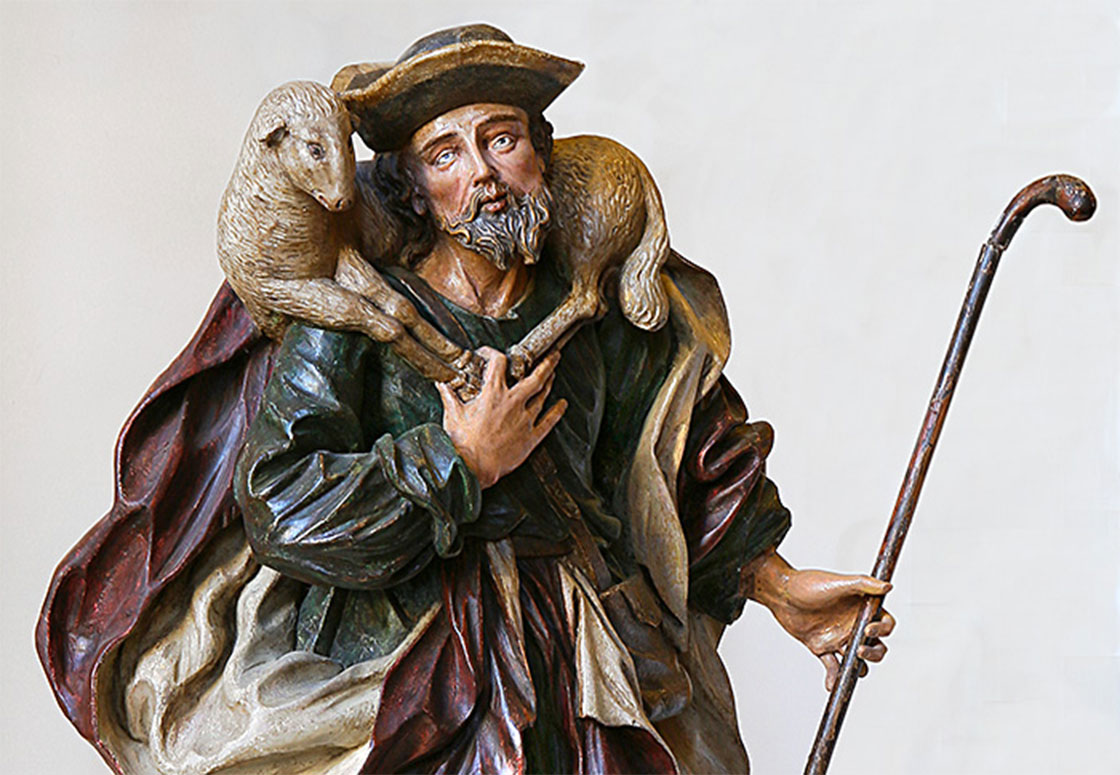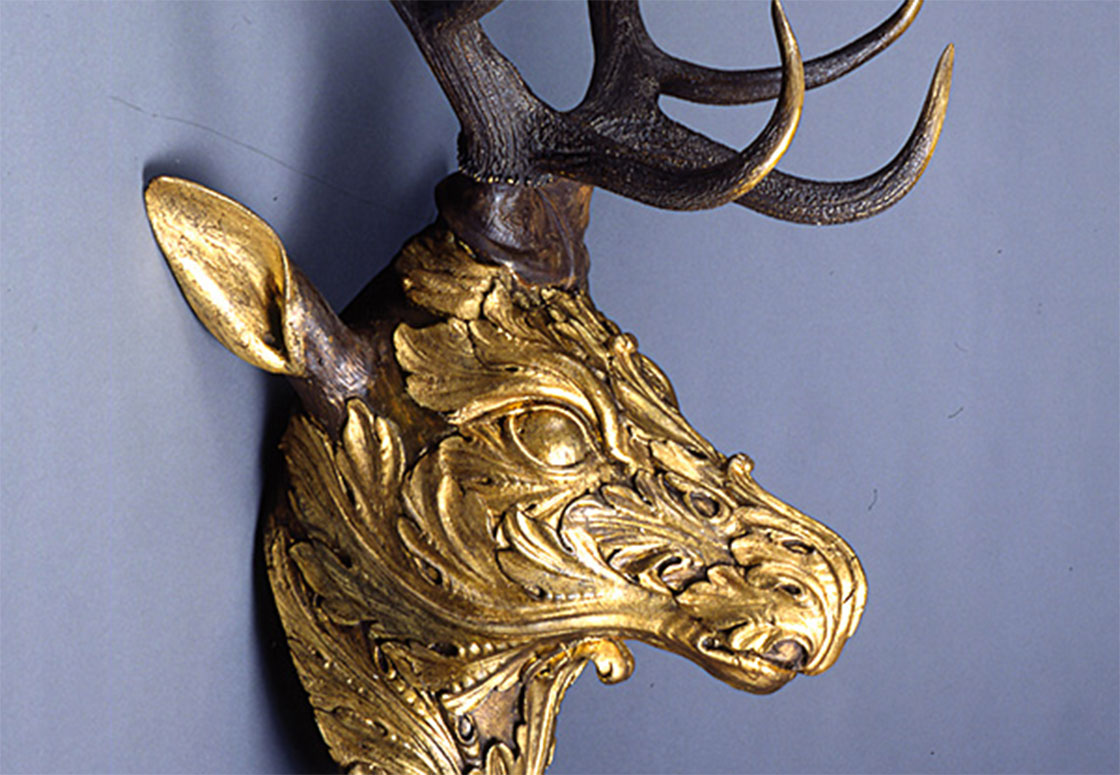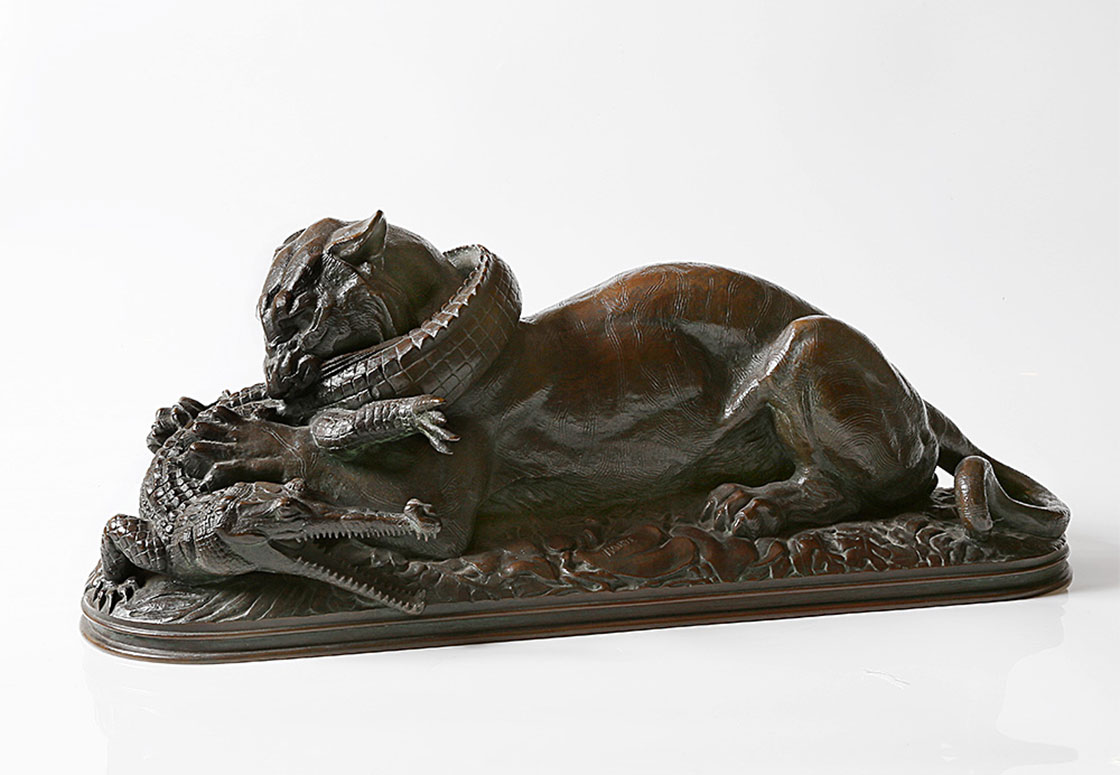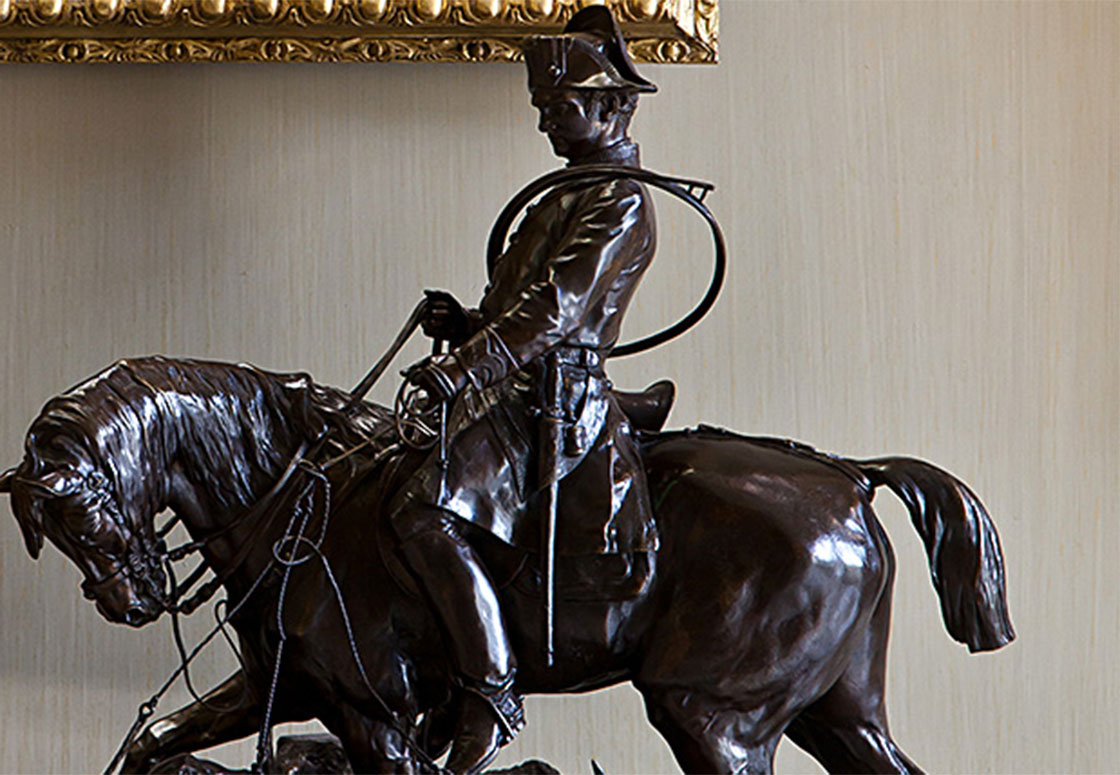Falconer
In the Middle Ages, Europe was infatuated with falconry. Falconry is a way of hunting in which man ensures the assistance of birds of prey. This activity is practiced on horseback, by men as well as by women. Exclusively reserved for the king and members of the aristocracy from 1392 onwards, this entertainment designates the quality of the hunter: ladies and knights carry their falcon in their fist during civil and religious ceremonies, taking care to adorn them with their colors.
This man - whose model is not identified - is represented with his falcon and dressed in a rich habit. The statue can also be seen as an evocation of the legend of Saint Bavon, patron saint of falconers. A young nobleman from a Flemish family, he was converted under the influence of Saint Amand. He became a monk, then a hermit, and was accused of having stolen a white falcon and was condemned to death. The hagiographic account then insists on the appearance of a falcon proclaiming the old man's innocence at the moment of execution. A noble attribute and a divine symbol, the falcon is a sovereign bird.


